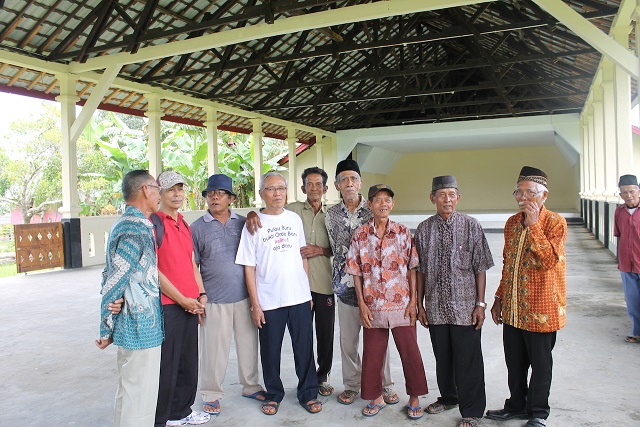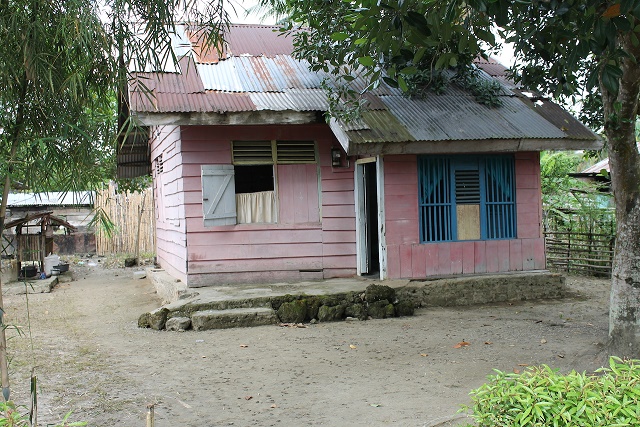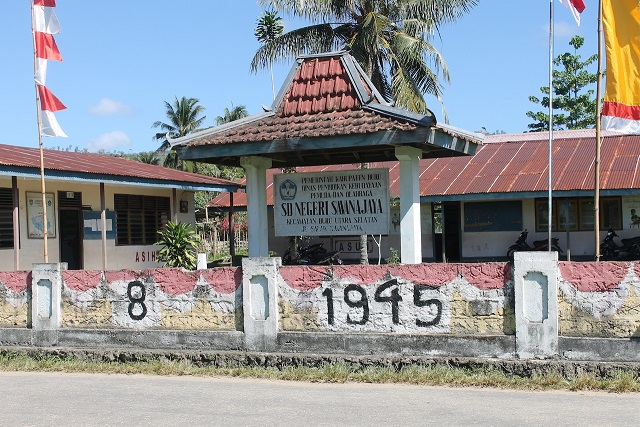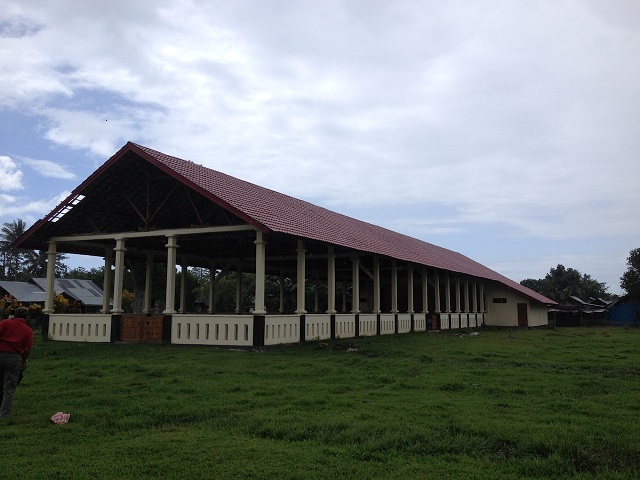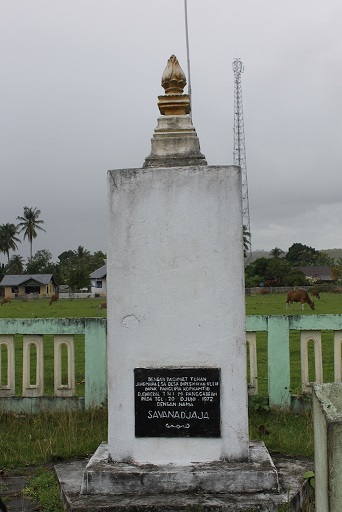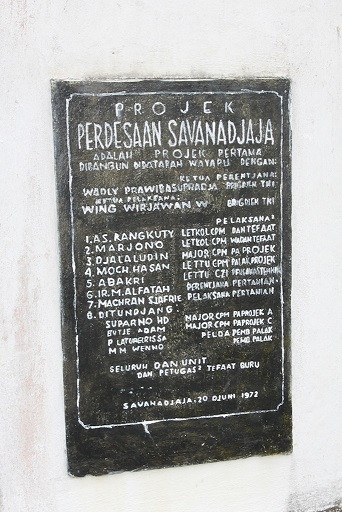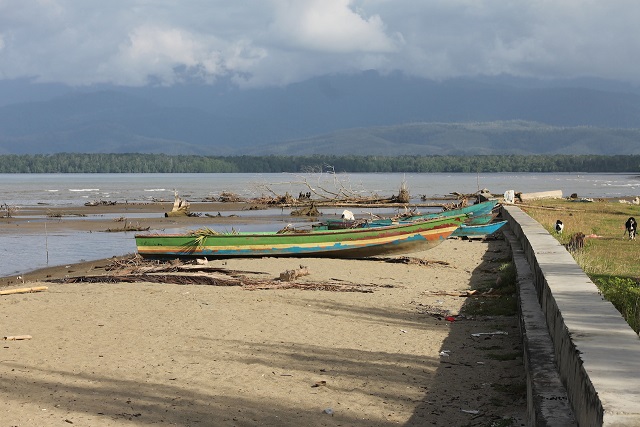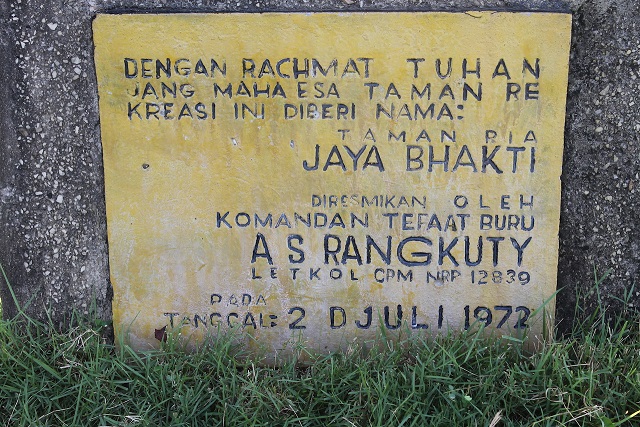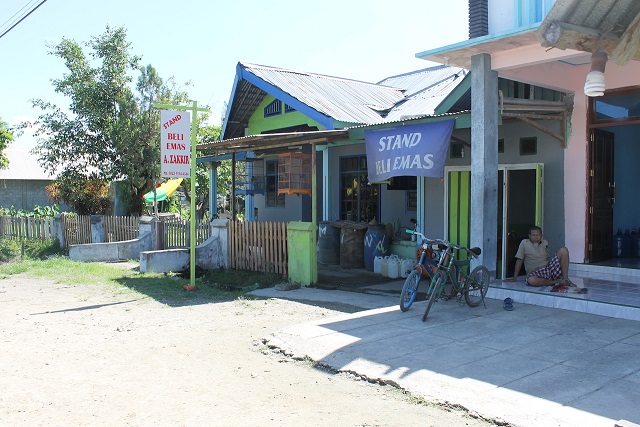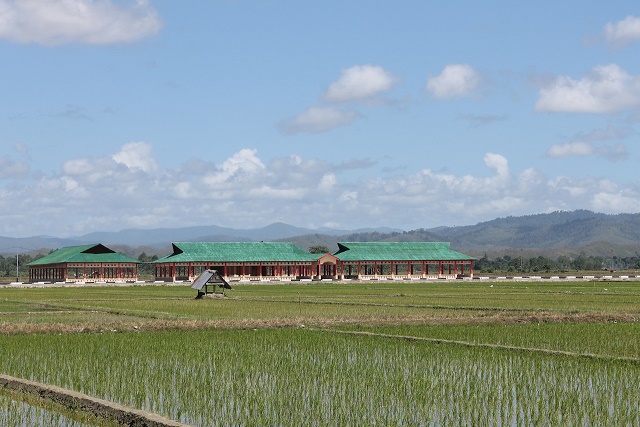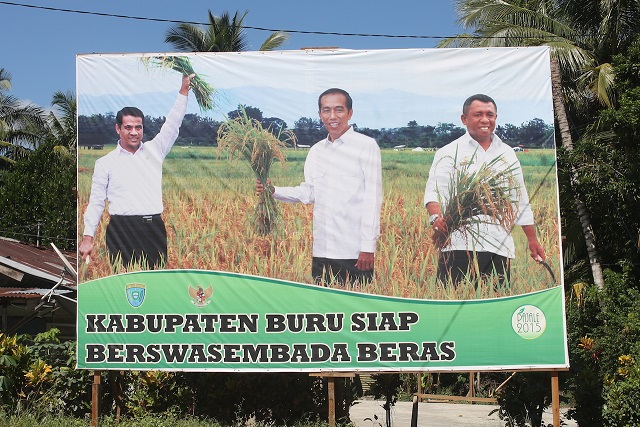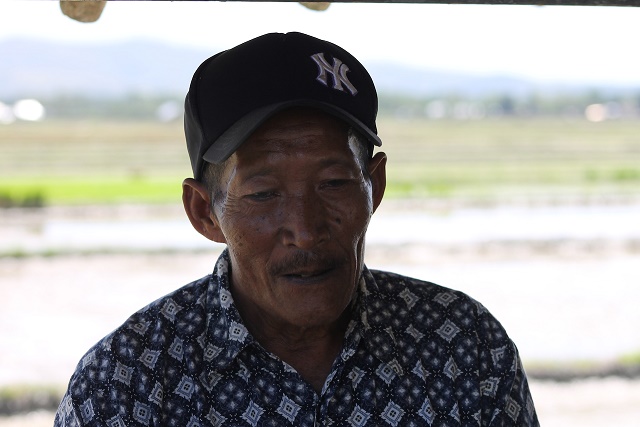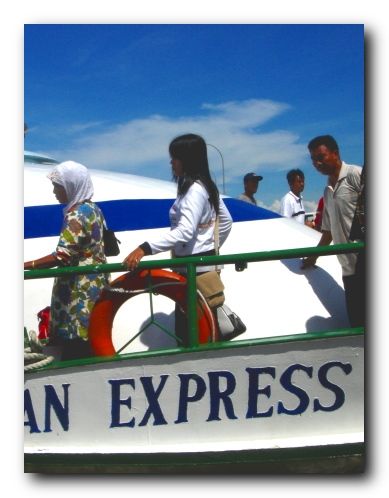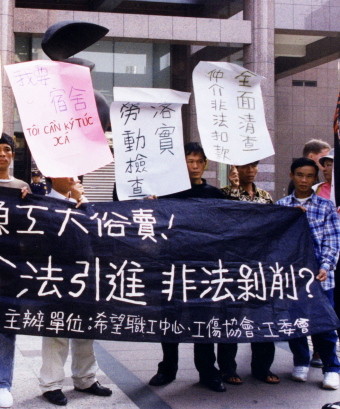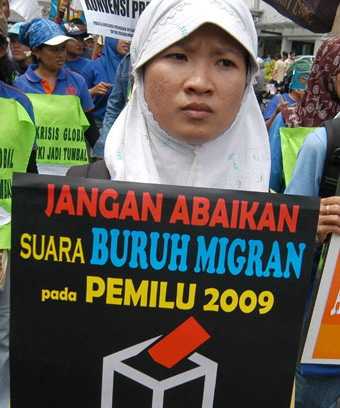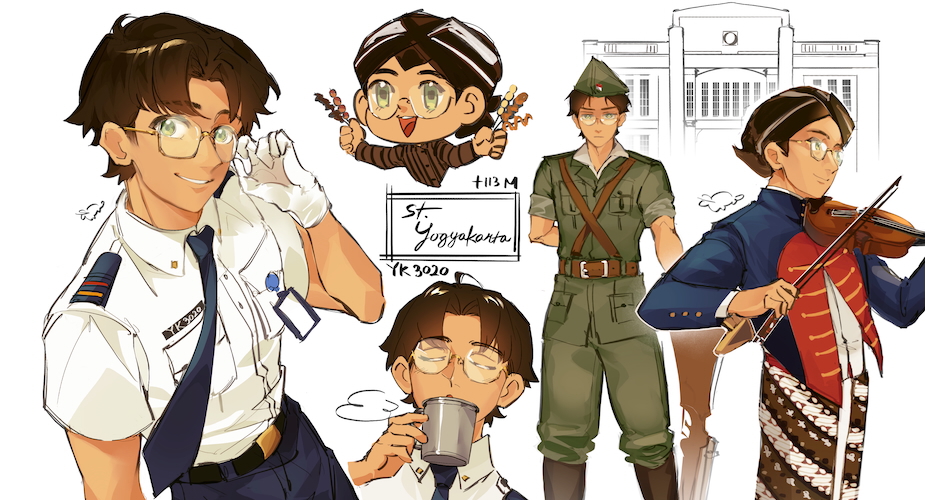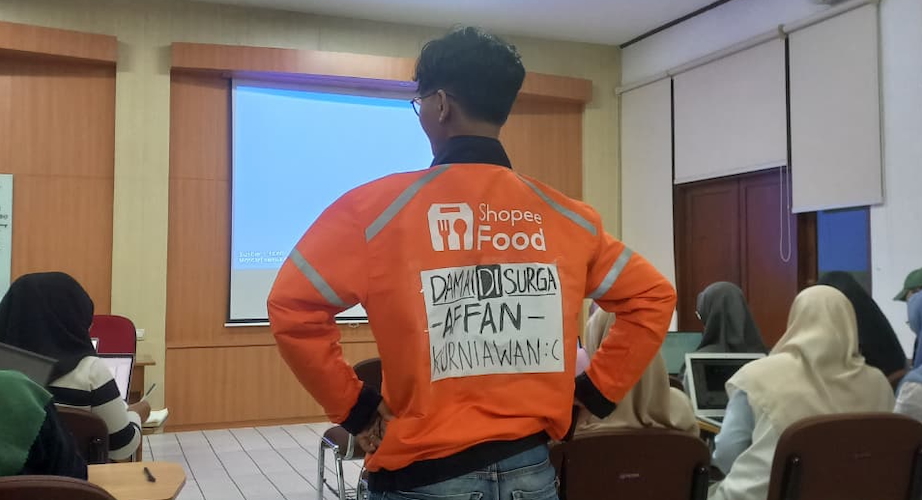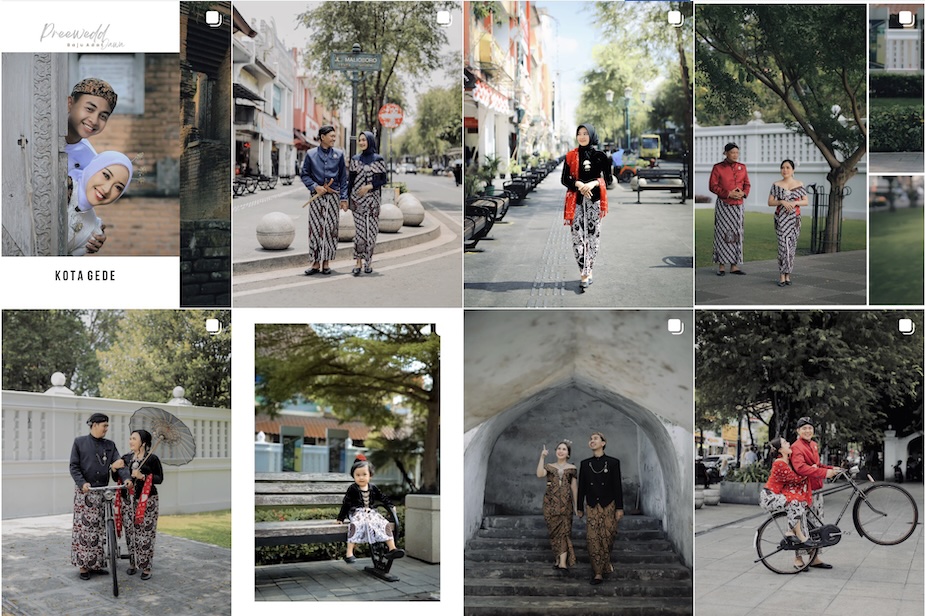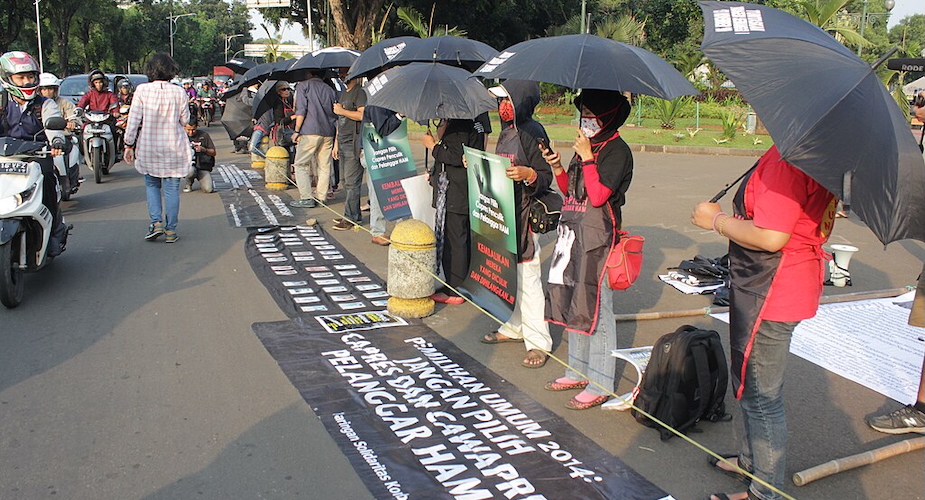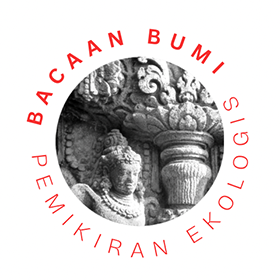The state should acknowledge the contribution of political prisoners on Buru
Ken Setiawan
It is 4 am in the morning when the ferry arrives in Namlea, the capital of Buru. The darkness is, I think, fitting for an island with a history as a prison camp.
I have come to Buru to trace my father’s footsteps on the island. A former general secretary of the left wing cultural organisation Lekra in Central Java and representative of the Indonesian National Committee for the Asia-Africa bureau of writers in Colombo, my father, Hersri Setiawan, was arrested in 1969. After being held at various prisons in Jakarta, he was sent to Buru in 1971 alongside 12,000 others.
On first sight, little remains of Buru’s history as a prison island. The prisoners’ barracks have long been demolished. When you look more closely, however, Buru’s past as a labour camp is never far away.
When the political prisoners arrived on Buru, from 1969 onwards, they cleared the land, constructed roads and rice fields and established villages. This labour was meant as punishment for the prisoners, but the authorities’ ultimate goal was to prepare Buru for the arrival of transmigrants. They referred to Buru as a 'Place of Utilisation', as well as a 'Rehabilitation Installation'.
Before transmigrants arrived, starting in 1972, the families of political prisoners settled on Buru. These families were allowed to move to the island to join their imprisoned family members. Prisoners who were reunited with their families were not formally released, but they were given some degree of freedom and were allowed to live in houses rather than in the barracks. Some of these houses remain. Often, the families of former political prisoners still occupy them, as some chose to remain on Buru upon the release of political prisoners from 1977 onwards.
A house built by political prisoners around 1972 in anticipation of the arrival of their families
Political prisoners also built other facilities such as schools. In Savanajaya village, approximately 20 kilometres from Namlea, political prisoners built the local primary school. Children on Buru were – and still are – taught by (former) political prisoners. Elsewhere in Indonesia, former political prisoners were banned from teaching.
The primary school in Savanajaya
An arts hall stands opposite the school in Savanajaya. Political prisoners also built this hall, which was used for performances to entertain fellow prisoners and guards. The hall still functions as a venue for performances and community meetings. In 2014, the hall was renovated with funding from the governor of Maluku. The renovations disappointed many political prisoner families on Buru, as they were not consulted. These families have salvaged the original wooden poles of the building, which have been replaced by concrete pillars, as they see the poles as part of their history.
Savanajaya’s arts hall
Former Buru political prisoners stand together in the arts hall
Very close to the arts hall is a monument that alludes to Buru’s history as a prison camp. Referred to as Tugu (Pillar), the monument marks the formal establishment of Savanajaya village. For many former political prisoners, this monument symbolises repression.
The Tugu monument in Savanajaya
The plaque on the back of the monument lists those involved in the establishment of Savanajaya, including all prison units
Similar monuments lie elsewhere on the island. On Sanleko beach, where many political prisoners first set foot on Buru, a recreational park was established in 1972, ironically called Victorious Service (Jaya Bakti). The park was opened by Buru’s commander, A.S. Rangkuti, known among prisoners as particularly cruel. Rangkuti eventually became mayor of Medan from 1980 until 1990.
Sanleko beach, where many political prisoners first arrived on Buru
The plaque on Sanleko beach signifying the opening of the recreational park
These monuments present Buru’s history as one of development: of establishing villages, even parks. The price paid for this development, however, is scarcely visible. The worn headstones of political prisoners graves best symbolise this cost. Worn by the elements and covered with moss, their names are barely legible.
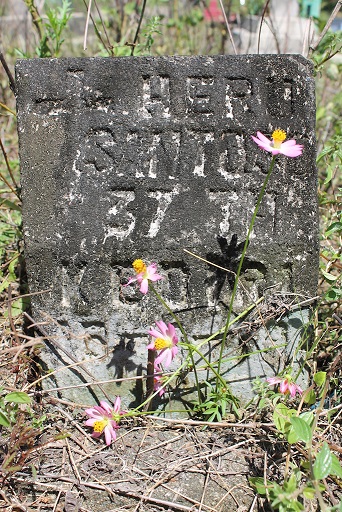
A simple headstone marks the grave of Heru Santoso, a political prisoner. He was 37 when he died, only months before he was due to be released
To the former political prisoner community on Buru, the outstretched rice fields across the island are the most tangible legacy of their labour. Today rice production is one of the main sources of income for Buru, together with eucalyptus oil, copra, nutmeg and cloves and more recently, gold mining.
In 2015, President Joko Widodo, or Jokowi, visited Buru, the second Indonesian president to do so after a visit from Susilo Bambang Yudhoyono in 2006. During his visit, Jokowi encouraged local farmers to increase their yields, as part of the government’s plans for Indonesia to achieve self-sufficiency in rice. The government envisages Buru will become the main supplier of rice for eastern Indonesia. To this end, Jokowi promised financial and material assistance, and called on the local government to regulate gold mining. Rice production has decreased as many people have turned from farming to gold mining, as the latter generates more income.
Along the roads in Buru there are many shops trading in gold
The rice fields Jokowi visited in May 2015
The production of rice in Buru, and particularly the broader goal to make the island an eastern hub in Indonesia’s quest for self-sufficiency in rice, cannot be separated from Buru’s history as a prison camp. It was through the forced labour of political prisoners between 1969 and 1979 that the rice fields were constructed. Many former political prisoners have expressed their disappointment at the lack of acknowledgement from the Indonesian state for their contribution to Buru’s development.
“Buru district is ready to become self-sufficient in rice”
Buru today is predominantly inhabited by transmigrants who came to the island in the late 1970s, being promised not only land, but ready-made rice fields. Many of these transmigrants had little experience in farming, and political prisoners taught them how to work the land. In the words of Untung, a transmigrant from Java, ‘Suharto told us the communists were bad. But when I came here, they [the prisoners] showed me how to irrigate and plant’. While the state is yet to recognise the work and suffering of political prisoners, people like Untung have not forgotten their contributions to the development of Buru.
Untung learnt how to work the rice fields from prisoners
Ken Setiawan (setiawan.k@unimelb.edu.au) is a McKenzie postdoctoral fellow at the University of Melbourne. Her research focuses on human rights discourses in Southeast Asia. You can also listen to Ken speak about her visit to Buru with Dave McRae for Talking Indonesia podcast Indonesia at Melbourne.

